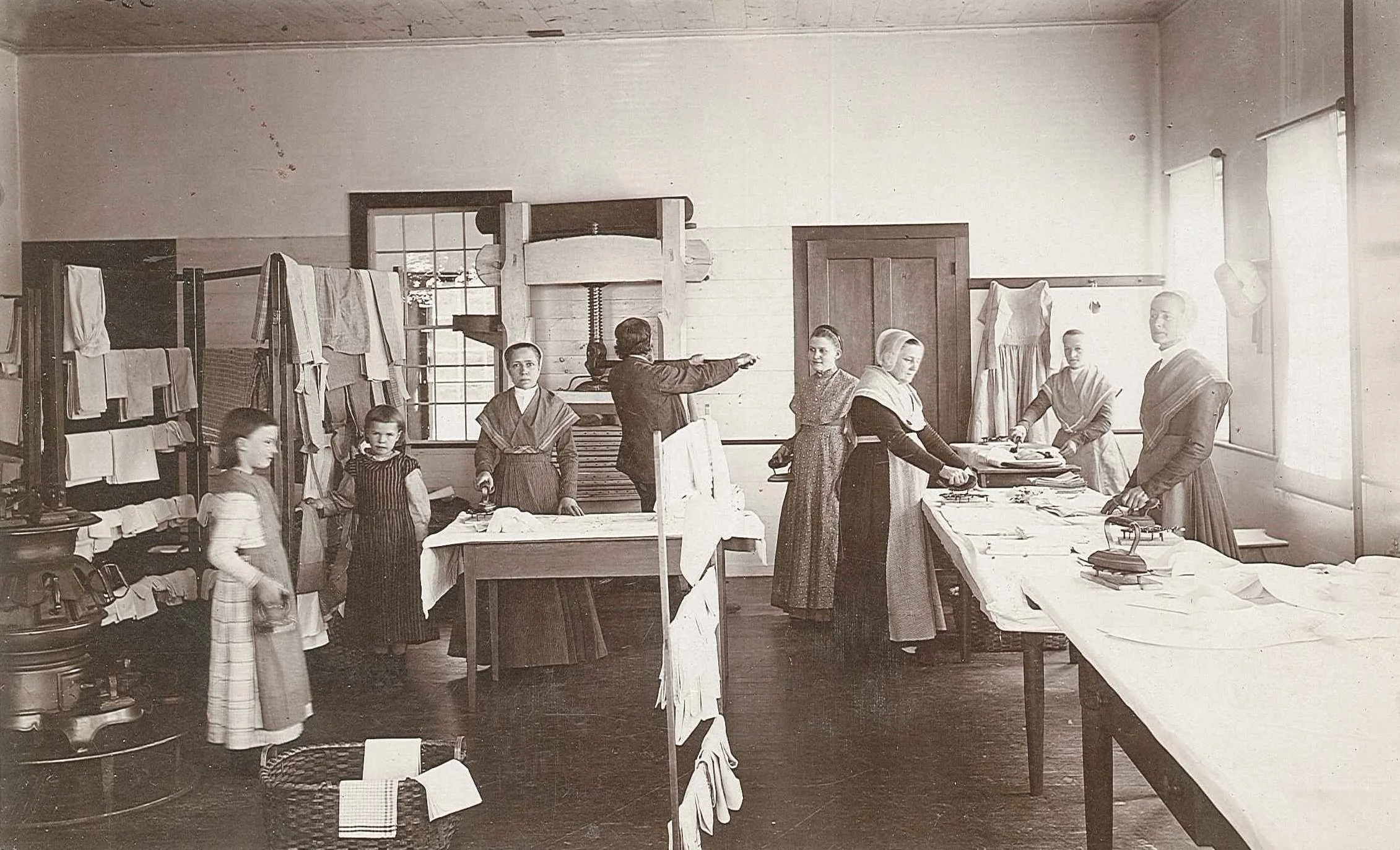Wash: There is no dirt in heaven
Who doesn’t enjoy sliding between freshly laundered line-dried sheets or wrapping up in a fluffy towel still warm from the dryer? Keeping clothes clean has been part of human life for millennia as have been the traditions that developed around this chore. “Monday we wash, Tuesday we iron, Wednesday we mend,… “ the sentiment if not the exact words of nursery rhymes and hopscotch songs through the ages emphasizes that washing clothes was part of the rhythm of family life. The Shakers, just like their neighbors adhered to this tradition – a tradition that aimed at making sure, even in rainy weather, clothes were clean by the Sabbath. For Shakers, the challenges faced by a neighboring family of seven – toughest stains removed, socks matched, and clothes folded and returned to the right person with missing buttons replaced – increased significantly for their family of seventy.
To do all this work the Shaker wash house was a small factory. At Mount Lebanon’s North Family, for example, washing was mechanized from the early 1820s, using waterpower to operate a mechanical wash-mill in place of the scrub board and muscle-power. The operation of washing machines, extractors, and elevators to lift clothes to from wash room to drying attic, was made possible by a Shaker-built system of dams, ponds, aqueducts, and waterwheels. This machinery and the power that ran it were constantly being improved.
Wash tells the story of the day to day work of Shaker men and women in doing this most mundane of domestic chores and looks at the innovation that they employed to make it easier and more efficient.
This exhibition was originally on view at the Historic Mount Lebanon site from June 17 to October 10, 2016.

